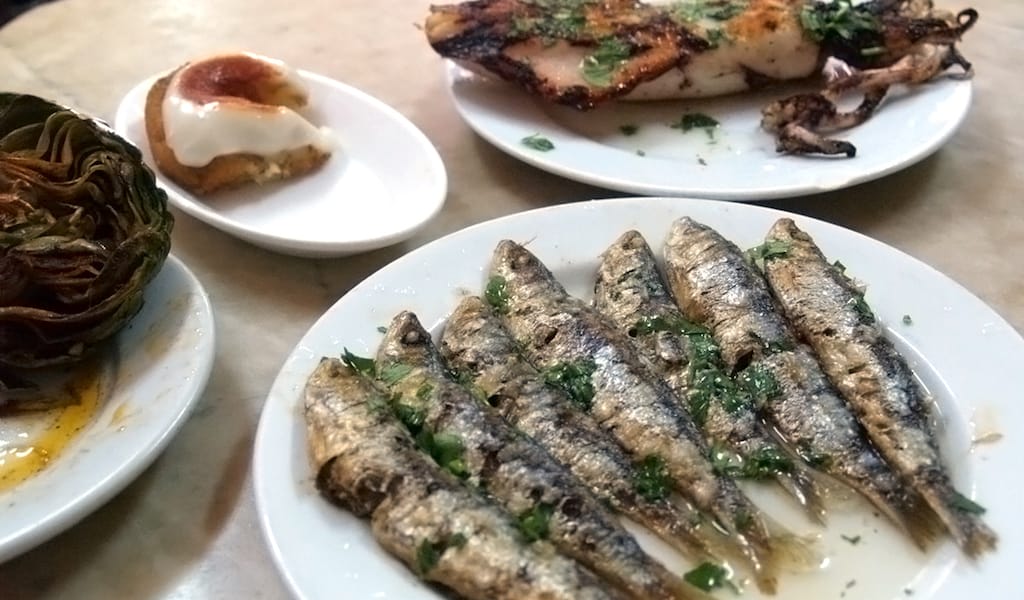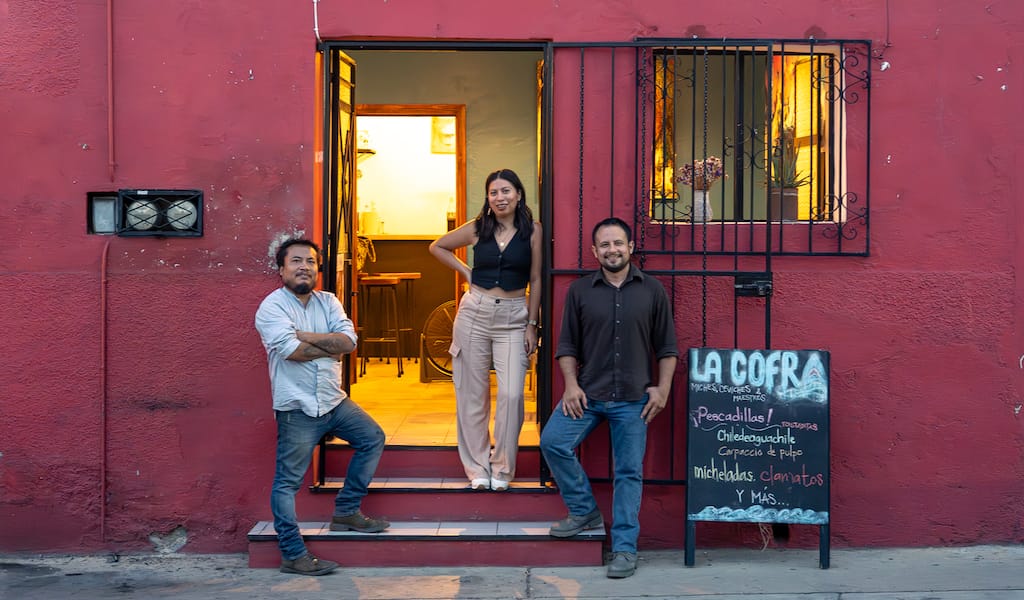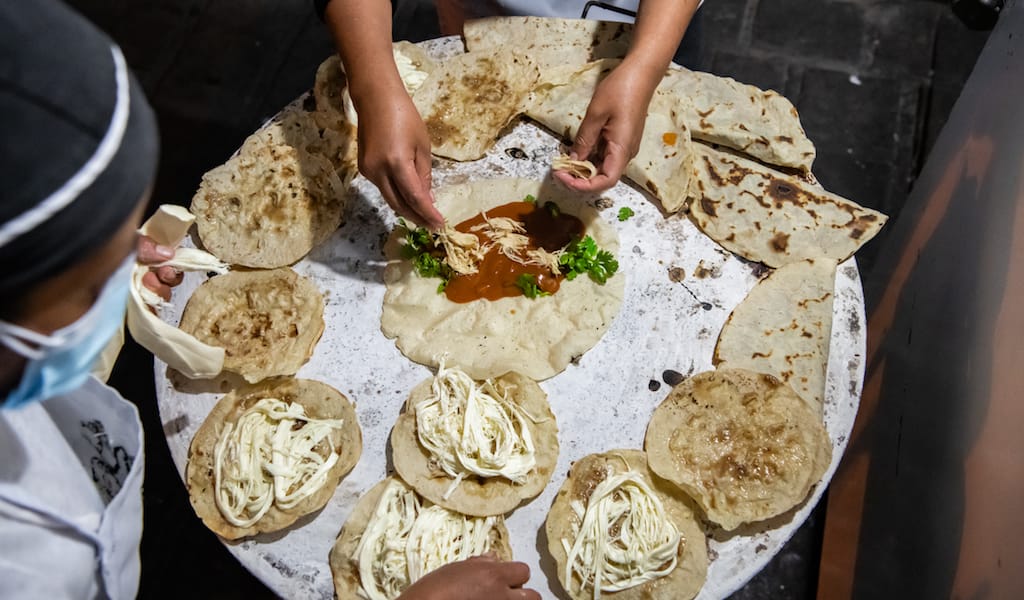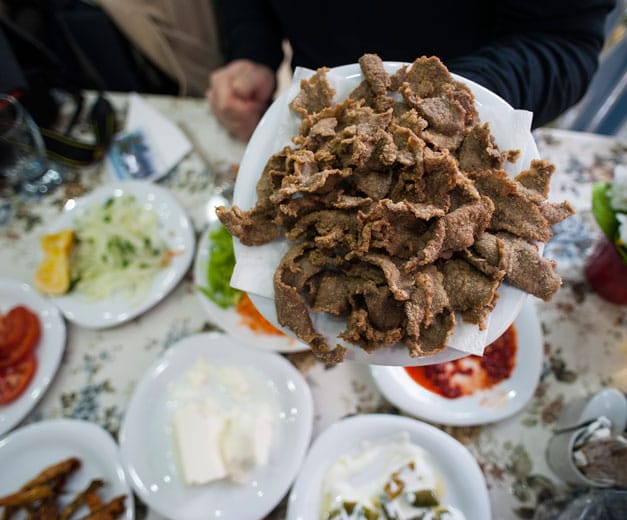Opened in 1944, La Cova Fumada (“The Smoked Cave”) is one of the most beloved gastronomic icons in Barcelona’s port area. Every day, people from all over the city come here to enjoy the powerful charms of the smell of fried fish, the spicy bite of their original “potato bombs” and the warmth of the familiar, old-school atmosphere. This is a place to take off your tie, eat with your fingers and put aside your smartphone, lest the screen gets covered with grease from your fingers.
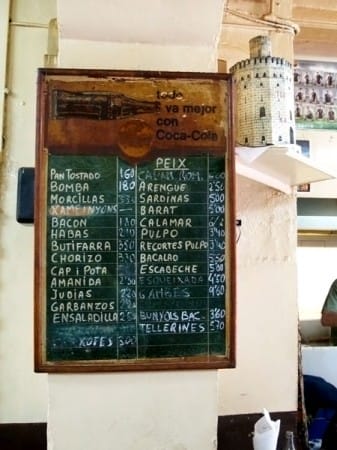 Inside the restaurant, the atmosphere has remained almost unchanged since the 1940s. In those difficult years just after the Spanish Civil War, the main customers at this typical bodega were people from the neighborhood and workers at shipyards in the port and the famous nearby “Maquinista” ironworking and machine factory, who came to have a glass of wine and to heat up their own food in the open “cheap kitchen.” The same spirit still pervades the tiny venue today, from the seven old, marble-topped tables and the same cramped open kitchen to the almost prehistoric blackboard – with the same menu, always written in chalk – and the wooden wine barrels connected to a couple of taps set into a marble panel, on which bar tabs are recorded in pencil. Everything here looks like a blast from the past. More than just an eatery, the place is truly part of the city’s ethnographic heritage. (Although La Cova is located in the market square of La Barceloneta and has two entrances, it is not so easy to find if you don’t know what you’re looking for. There are no signs over the doors, so you’ll have to look for the people waiting outside and follow your nose toward the aromas wafting out the window from the kitchen.)
Inside the restaurant, the atmosphere has remained almost unchanged since the 1940s. In those difficult years just after the Spanish Civil War, the main customers at this typical bodega were people from the neighborhood and workers at shipyards in the port and the famous nearby “Maquinista” ironworking and machine factory, who came to have a glass of wine and to heat up their own food in the open “cheap kitchen.” The same spirit still pervades the tiny venue today, from the seven old, marble-topped tables and the same cramped open kitchen to the almost prehistoric blackboard – with the same menu, always written in chalk – and the wooden wine barrels connected to a couple of taps set into a marble panel, on which bar tabs are recorded in pencil. Everything here looks like a blast from the past. More than just an eatery, the place is truly part of the city’s ethnographic heritage. (Although La Cova is located in the market square of La Barceloneta and has two entrances, it is not so easy to find if you don’t know what you’re looking for. There are no signs over the doors, so you’ll have to look for the people waiting outside and follow your nose toward the aromas wafting out the window from the kitchen.)
But at La Cova Fumada is also rightfully legendary for its food – in particular, for having introduced the potato bomb, said to have been invented in the 1950s by María Pla, grandmother of the current owners, brothers Josep María y Magí Sole. Her original version of this dish – which has since become one of Spain’s most famous and classic tapas – was a small ball made of mashed potatoes with some pork inside, rolled in breadcrumbs and egg, deep-fried in olive oil and, finally, served with either aioli (mayonnaise with garlic) or a spicier sauce made with cayenne peppers.

Beyond the renowned potato bombs, the menu on the blackboard is more or less a roster of classic tapas and small portions of fresh seafood grilled with garlic and parsley. Sardines, mackerel, prawns, squid and octopus are all served with a touch of olive oil and are best eaten with some pa amb tomàquet (bread rubbed with oil and tomato). Other excellent tapas include tender and very tasty fried artichokes, cooked chickpeas, stewed beans from Cartagena, butifarra negra (black Catalan sausage) and reconsistuted salt cod. Another very traditional dish is the cap i pota, a spicy Catalan stew made with the gelatinous parts of a pig’s head and feet (hence the name), also known in Spain as callos. The only change in the menu in the last 70 years is the introduction of seasonal fresh seafood, such as fresh clams, razor clams or crawfish, which are steamed and prepared with just the freshness of the sea for flavoring.
La Cova Fumada is a place with what Spaniards call “solera,” having a sort of vintage character and maturity. And nobody in the Sola Pla family has any thought of changing this. “This is the charm of the place and the family atmosphere that we like to keep; it’s what people enjoy,” said Jose María. Sometimes, the old-fashioned touch creates the best fire with which to cook the food.
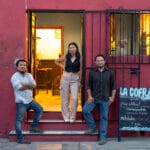 August 23, 2023 La Cofra: Surf and Suds
August 23, 2023 La Cofra: Surf and Suds
One of the most powerful and restorative culinary combos enjoyed in Mexico is, without a […] Posted in Oaxaca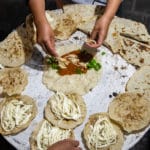 September 29, 2021 Empanadas del Carmen Alto
September 29, 2021 Empanadas del Carmen Alto
Oaxaca’s street food scene has surprises for us every day of the week. From breakfast to […] Posted in Oaxaca April 6, 2015 CB on the Road
April 6, 2015 CB on the Road
The city of Edirne sits on the borders of Bulgaria and Greece in the far northwestern […] Posted in Istanbul
Published on June 17, 2013
Related stories
August 23, 2023
OaxacaOne of the most powerful and restorative culinary combos enjoyed in Mexico is, without a doubt, seafood and micheladas, delicious concoctions made with beer – usually lager – and a mix of sauces, lime and spices, which can go from zero to quite spicy. A michelada is one of those drinks that it is often…
September 29, 2021
OaxacaOaxaca’s street food scene has surprises for us every day of the week. From breakfast to lunch, we can find plenty of stalls with a plethora of options: eggs, tamales, tortas, tacos, hot drinks, juices and more. However, when sunset bathes the streets of the historic center, most of these stalls are disassembled into heaps…
April 6, 2015
IstanbulThe city of Edirne sits on the borders of Bulgaria and Greece in the far northwestern and European portion of Turkey. Once the capital of the Ottoman Empire, Edirne has been occupied for thousands of years, dating back to the Romans and Thracians before them. While no longer the seat of an empire, Edirne could…







































